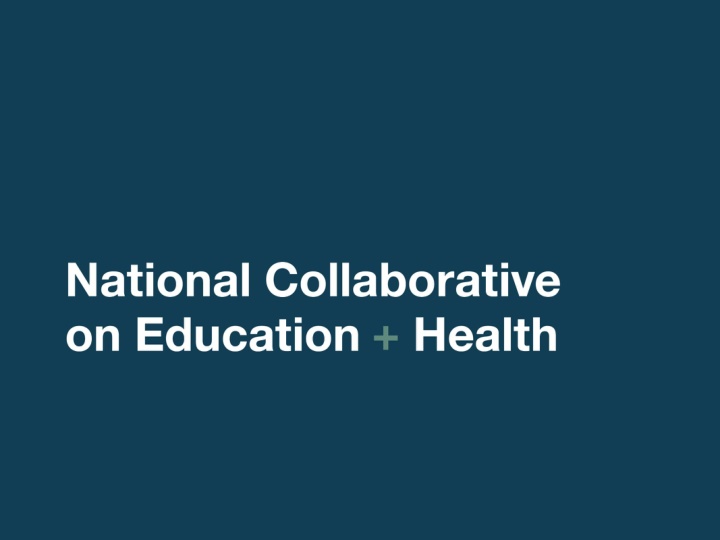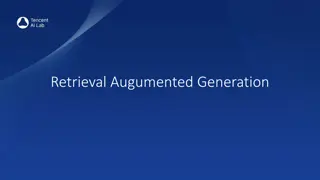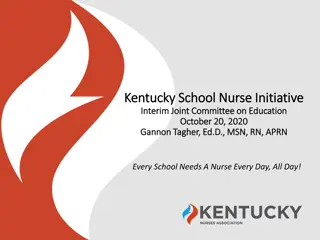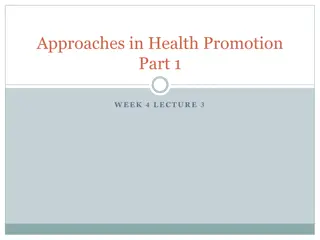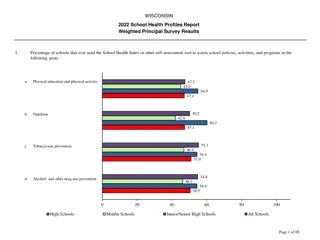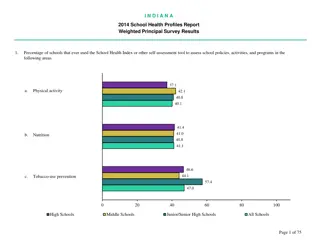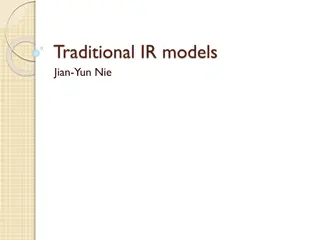School Health Service Delivery Models Overview
This content discusses various models of school health service delivery, including Specialized Instructional Support Personnel (SISP), school-based health centers, types of partners involved, services offered, outcomes, and the impact on students' health and academic performance.
Download Presentation

Please find below an Image/Link to download the presentation.
The content on the website is provided AS IS for your information and personal use only. It may not be sold, licensed, or shared on other websites without obtaining consent from the author.If you encounter any issues during the download, it is possible that the publisher has removed the file from their server.
You are allowed to download the files provided on this website for personal or commercial use, subject to the condition that they are used lawfully. All files are the property of their respective owners.
The content on the website is provided AS IS for your information and personal use only. It may not be sold, licensed, or shared on other websites without obtaining consent from the author.
E N D
Presentation Transcript
Leading Models Specialized instructional support personnel (SISP) School-based health centers Partnerships with providers
SISP: School Nurses 45% of schools have a full-time school nurse Services Offered Vision/hearing assessments Immunizations Health education Health surveillance and public health reporting Administer medication Outcomes $2.20 benefit-cost ratio* Reduction in absenteeism Reduction in ER visits Improvements in achievement *Wang, Vernon-Smiley, Gapinski, Desisto, Maughan & Sheetz, 2014
SISP: Behavioral Health Specialists Less than half of schools have a school counselor Services Offered Providers Social workers Counselors Psychologists Other registered/licensed mental health clinicians Assessments of mental/emotional well-being Interventions (ex. crisis response, counseling, drug/alcohol treatment, classroom-based social and personal skill development
School-Based Health Centers (SBHC) Services Offered Physical exams Oral health Screenings Immunizations Management of chronic conditions Age-appropriate reproductive health care Primary medical care for injuries and illness Laboratory tests OTC medications and prescription writing Referrals Providers Nurse practitioners Physician assistants Physicians Residents Medical assistants Nurses Reach 2,315 SBHCs in 49 of 50 states and DC Over 2 million children/young persons* NCSL. School Based Health Centers, 2011
School-Based Health Centers (SBHC) Outcomes Serve students from other schools/other community members 20% receive funding from HRSA Health Center Program Reduce ER visits Positive Impact on absences, drop-out rates Increase access to primary care Reimbursed Medicaid fee-for-service School-Base Health Alliance, 2013-2014 Digital Census Report
Types of Partners School-linked Health Centers Hospitals Local Health Departments Federally-Qualified Health Centers Telehealth Providers Mobile Clinics Managed Care Organizations and Other Health Insurance Companies Accountable Care Organizations
Partnerships: School-Linked Health Centers Outcomes Provide reproductive health services Located conveniently in community Negotiate with managed care plans Providers Nurse practitioners Physician assistants Physicians Residents Medical assistants Nurses Services Offered All services offered at CHC Reproductive health
Partnerships: Hospitals Spectrum Health System in Grand Rapids, MI invests $750,000 of community benefits annually to school health Nurses in 11 of 75 schools Four school-based health centers Subsidizes half the costs Partnership between Austin Independent School District and Dell Children s Covers primary HR costs of school nursing program Provides professional development to school nurses
Partnerships: Health Departments Partnership with local eyeglass manufacturer and Chicago Department of Public Health reduced wait time for eyeglasses from three months to two weeks Partnership with Chicago Department of Public Health to deliver dental services via mobile van
Partnerships: Federally-Qualified Health Centers Funding Public Health Service Act 330 grant funding Medicaid reimbursement under PPS or APM 340B Drug Discount Pricing Malpractice Coverage Reach 7.1 million children, 70% of whom (5.2 million) are enrolled in Medicaid* Providers Nurse practitioners Physician assistants Physicians Residents Medical assistants Nurses Services Offered Primary care, dental, SDoH *HRSA, 2014 Health Center Data. 2014.
Partnerships: Telehealth Services Offered Reach Primary and acute care Chronic disease management Behavioral and mental health Speech therapy Dental screenings Nutritional counseling Health education Improve access in rural /MH provider shortages areas Benefits & Outcomes SBHC can bill Medicaid in many states Reductions in absenteeism Parent satisfaction
Partnerships: Mobile Clinics Services Offered Reach Similar to SBHC Can be specialized to need (i.e. dental or asthma mobile clinic) 1500 mobile clinics 5 million annual visits Benefits & Outcomes Often more economical than physical facility Increases in asthma medication adherence Reductions in ER visits and absenteeism
Partnerships: Managed Care Organizations and Other Insurers In Madison, WI two local MCOs pay a portion of a school nurse s salary to increase # of health screenings their Medicaid members receive St. Paul School District contracts with 3 MCOs
Partnerships: Accountable Care Organizations OR was awarded a State Innovation Model grant 15 Coordinated Care Organizations (CCOs) Demonstration project in Portland metro area between school nurses and local CCO Trillium Community Health Plan funds the Good Behavior Game in 50 Oregon schools
Service Integration: Communities in Schools Services Offered Reach 1.5 million kids annually in 25 states + DC School-based site coordinator case management Connections to community services Health services Social services Tutoring/academic help Transportation Benefits & Outcomes Annual costs less than $159/student $11.60 in economic benefit for the community for $1 investment Increase in academic achievement Reduction in absenteeism
